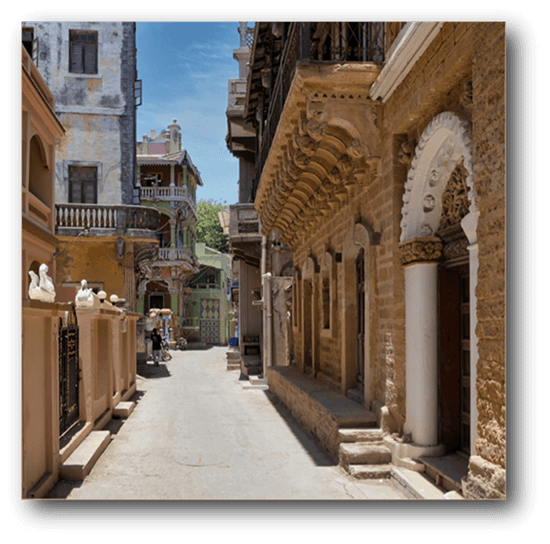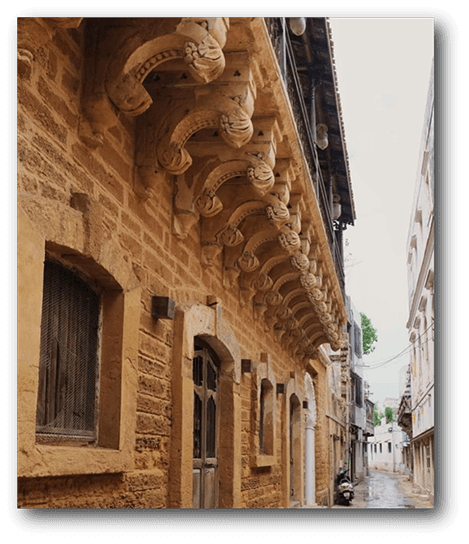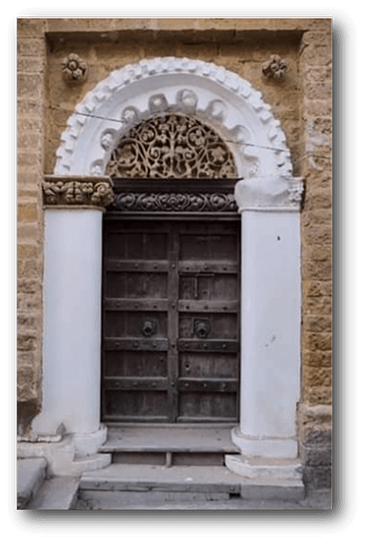Read this blog post in: Português
Facing the Kathiawad Peninsula and overlooking the Arabian Sea, rises our island of Diu. Diu is a city and district headquarters in India that belongs to the territory of Dadrá and Nagar Haveli, and Daman and Diu. It was part of the former Portuguese State of India until it was annexed by India in 1961.
The strategic importance of Diu as a commercial hub in the Indian Ocean has long been recognised, despite the decline it experienced in the last quarter of the seventeenth century. A great deal of Diu’s commerce, along with the island’s privileged connections with East Africa (especially Mozambique), was sustained by the activity of the Banians – Hindus and Jains – who had long used this small island as a platform for trade. The financial capacity and commercial experience of the local Banians allowed them to dominate most commercial activity in Mozambique from the late seventeenth century onwards. Many Banian families made a fortune from foreign trade.
The Portuguese were the lead explorers in maritime trading and colonisation during the fifteenth and sixteenth centuries. They colonised many areas along the coasts of Brazil, Africa, India, Sri Lanka, China and the Far East, and gained knowledge and experience as they travelled from one place to another. In India, the Portuguese left their mark in many cities through their religion, language, lifestyle, art and architecture. Indo-Portuguese architecture is a perfect example of the cross-cultural miscegenation of Portuguese culture and Indian culture.
There are many houses in Diu with facades richly decorated with lavishly flowered designs and other extravagant features.
The most impressive and elaborate buildings in Diu town’s western maze of tiny streets are found in the Panchwati area on Makata Lane, a quiet, narrow street shaded by leafy trees. On either side of the street are high walls; massive, teak darwazas (carved wooden doors) protect these mansions from outside eyes.
Nagar Sheth Haveli, an old merchant house, is particularly notable for its stucco scrolls and copious fruit carvings. This colourful haveli in Diu is unashamedly flamboyant. It is a three-storey building surrounded by a courtyard. The latter is overlooked by riotously decorated, brightly coloured balconies. Though recently painted, it was already built by 1922. Its present incumbent resides in Bombay most of the time.
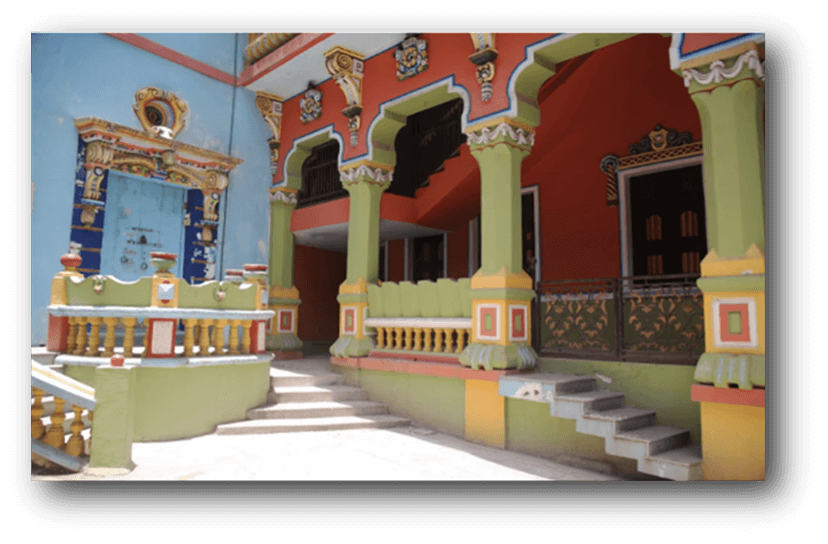
Nagar Sheth Haveli, surrounded by a courtyard and dominated by brightly coloured and exuberantly decorated balconies.
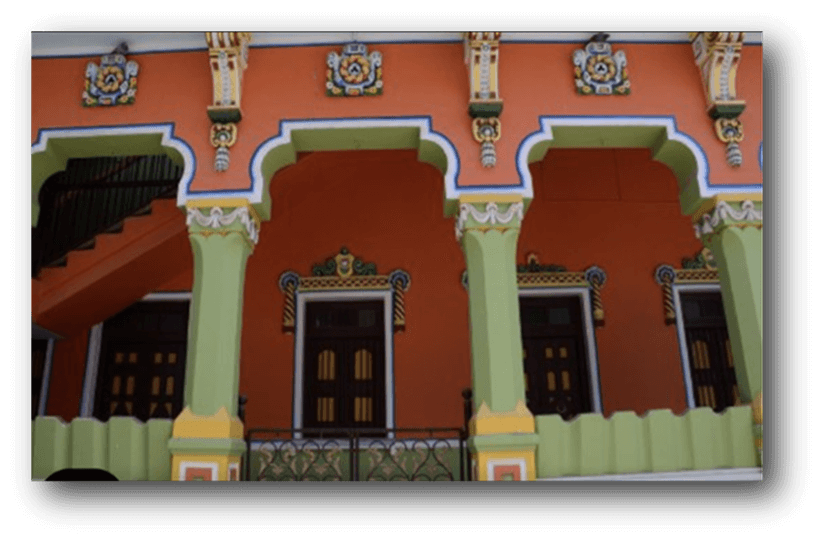
Brightly coloured balconies of Nagar Sheth Haveli.
Mr. Calanchande Irachande, popularly known as Nagarsheth, was born in Diu in 1883 and was one of the most important traders, with businesses in Bombay and Lourenço Marques. He was the grandson of Mr. Bhovanidas Nana, who was in the Portuguese Army of India, Captain-General of the Island of Mozambique, and a great benefactor, and was therefore decorated by the Government with the Commendation of Benefaction. Mr. Calanchande was a protector of education, having offered 10,000 rupees (58,000 escudos) for the maintenance of teachers at the Bhagvandas Laxmichande school. He also offered the building for this school, however, the government took advantage of it to install the tribunal and offered a different building, which had been constructed especially for a worthy donor, as a replacement. Through his scholarship, he also supported two Gujarati language schools in the villages of Fudam and Bucharvada on the island of Diu. In 1928, he received the degree of Commander by the Order of Instruction and Benefaction (Original Portuguese: Ordem da Instrução e da Benemerência).
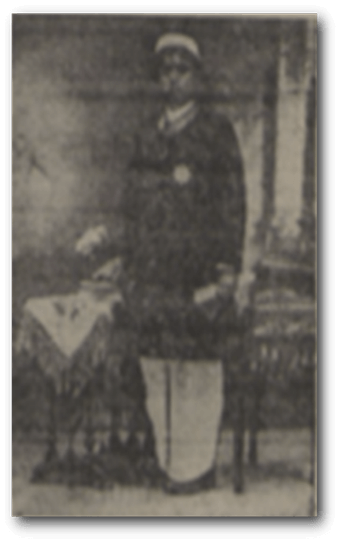
Mr. Calachande Irachande
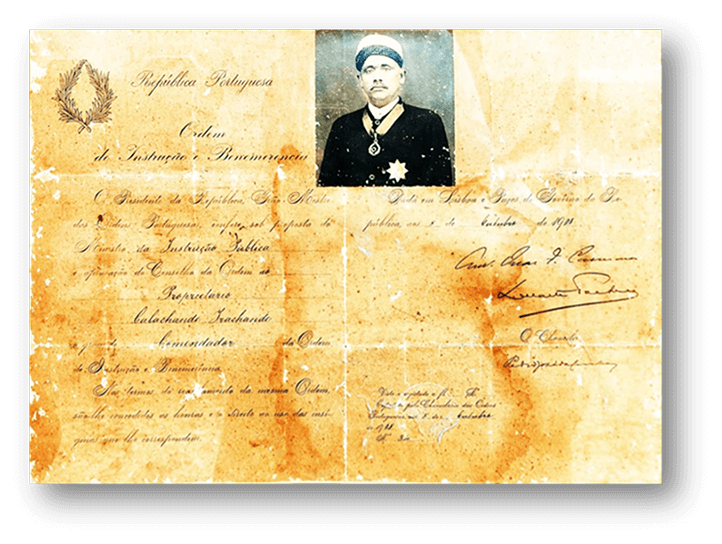
The merit certificate received by Mr. Calachande Irachande by the Order of the Instruction and Benefaction, attributing him the degree of Commander in 1928. Photo courtesy: Mr. Upendrakumar Santilal.
Portuguese Republic Order of Instruction and Benefaction The President of the Republic, Grand-Master of the Portuguese Orders, confers upon proposal of the Minister of Public Instruction and approval of the Order's Council to the Owner Calachande Irachande the degree of Commander of the Order of Instruction and Benefaction. Under the terms of the regulation of the same Order, are granted the honours and the right to use the insignias that correspond to it. Given in Lisbon and at the Government Palace of the Republic, on October 5, 1928. Antonio Oscar Fragoso Carmona Duarte Pacheco

Exterior view of Nagar Sheth Haveli.
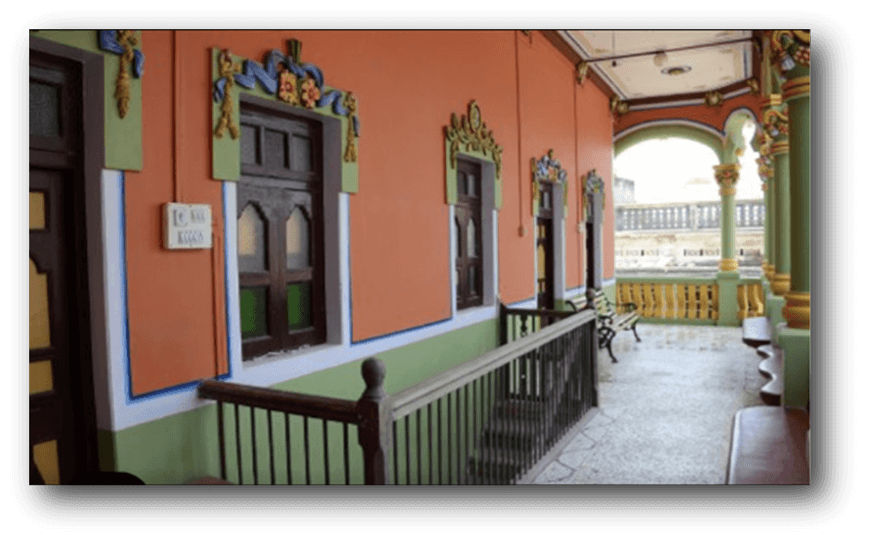
Nagar Sheth Haveli, seen from the balcony.
In his palatial residence, in the midst of his large family, Mr. Calanchand lived with his wife, Kesar, his children, Pranlal, Jentilal and Santilal, friends and employees. On one wall, one could see photographs of the three illustrious Portuguese individuals, Carmona, Salazar and Mouzinho de Albuquerque.
The title, Nagarsheth, designated Mr. Calanchande as an important member of Diu’s merchants. The word nagar means city in Gujarati and sheth is one of the many terms for merchant. As a composite, the term joins person and place, and is used to designate the representative of a city’s merchants. This important official, usually a wealthy merchant in Diu, is the leader of all of a city’s clans. He settles inter-clan disputes, other disagreements, and negotiates between the whole of the Hindu community and major organisations such as the Municipal Council. Nagarsheth’s family held this title for almost five hundred years.
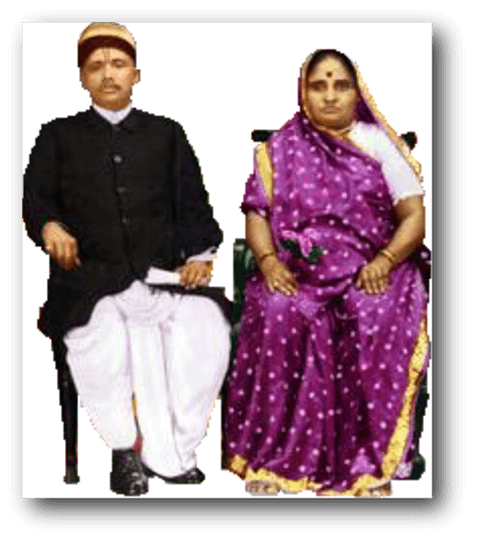
Mr. Calachande Irachande with his wife, Mrs. Kesar. Photo courtesy: Mr. Upendrakumar Santilal.
Their ancestors fled Diu during the violence between Malik Ayaz and the Portuguese. They only returned when a Portuguese contingent, which arrived in the ancestral village called Simbar, coaxed them to, promising them peace and patronage under their rule. From then on, one of Mr. Calanchande’s family members held the post of Nagarsheth. For many centuries, one branch of the Nagarsheth family tree was based in Lourenco Marques, Mozambique. The family made most of its money through textile and cashew trades, capitalising on the opportunity to trade in the Lusophone (Portuguese-speaking) world. Ever since Diu was surrendered to India in 1961, the family has been trading exclusively from Bombay. Their haveli in Diu continues to be a place of return for family occasions.
Company of Mahajans
In Mozambique, two systems of explorers and/or traders had been installed: the Portuguese Crown with its headquarters in Lisbon, and the Prazeiros with one part in Lisbon and the other in India.
Most of the commercial wealth from these systems was channelled to Goa, India, where a commercial elite had been luxuriously established, while only a small scale arrived in Lisbon.
It was through Goa that the Portuguese Crown administered Mozambique. The captain general of Mozambique was subordinate to the viceroy of Goa. In the 17th century, when the first Indians began to arrive on the Island of Mozambique, India truly became the mercantile “metropolis” of Mozambique in terms of capital accumulation.
In 1686, the viceroy of Portugal formed a company called Companhia dos Mahajanes in Diu, composed of rich Indian shipowners and merchants. It obtained a monopoly of trade between Diu-India and Mozambique, as well as extensive commercial privileges in terms of freight, logistical support, official Portuguese aid, etc. The main objective of the creation of the company was the control of the gold trade (16th-17th century) and later of ivory and slaves.
Following the formation of the Companhia dos Mahajanes, Indian merchants began to migrate to Mozambique. The first seven arrived in 1687 and settled on the Island of Mozambique. Year after year, they moved to other Mozambican regions, namely Vale do Zambeze, Inhambane and Lourenço Marques.
The formation of this company was planned in Goa rather than in Lisbon as the Portuguese nobility in India were interested in the wealth, disregarding the interest of the established nobility in Portugal. This caused contradictions within the Portuguese ruling class itself as Goa would be obtaining the greatest profit from the colonial mercantile mine. This culminated in the separation of Mozambique from Goa on the 19th of April, 1752, when Mozambique became directly subordinated to Lisbon. In Mozambique, D. Francisco de Melo e Castro was appointed Governor-General.
Post by Dipac Canacsinh
Acknowledgements
I would like to thank Mr. Upendrakumar Santilal, the grandson of the late Mr. Calachande Irachande, for providing me with a few of the illustrative photographs used in this article.
My gratitude goes also to the website ‘Make it Happen’ for the first three colourful photographs used in this article. This website may be visited through http://makeithappen.com.in or by hovering over one of the first three photographs and clicking on the hyperlink that appears.


